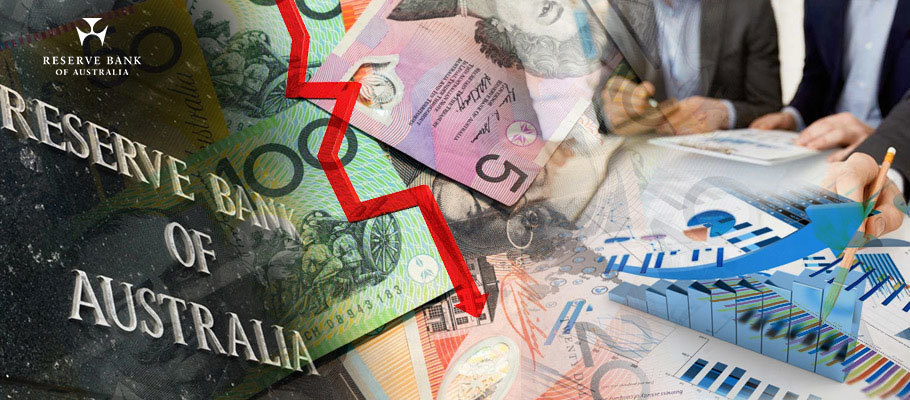
Published: June 21st, 2023
The Australian Dollar (AUD) was weaker against G10 peers as expectations for further RBA rate hikes retreated after the Reserve Bank of Australia (RBA) published minutes from its June meeting
The RBA raised the cash rate a further 25 basis points in June and brought a previously announced break from hiking to a close. Minutes from the bank’s policy committee meeting, however, revealed that it was a more nuanced decision than previously expected.
‘AUDUSD fell close to 0.8 per cent to 0.6810 because of dropping commodity prices and a set of dovish signals from the Reserve Bank of Australia’s early June meeting,’ said an analyst note from Commonwealth Bank of Australia’s forex strategy unit. ‘The GBPAUD exchange rate got a similar lift, rising to 1.8793 after the minutes were released.’
Another analysis from ANZ said investors were not interpreting the RBA's June board meeting minutes as especially hawkish.
‘The argument for lifting the cash rate another 25 basis points centered on the heightened risk that inflation might take longer than had been expected to settle down to target’.
The RBA’s board noted that ‘inflation is already expected to stay north of target for a number of years, meaning Australia will need somewhat longer to return to target than some other countries.’
The decision to raise interest rates came as a surprise to forex traders expecting the central bank to stay on pause and the Australian Dollar rallied on the news of the 25bp hike. The Australian Dollar’s rise brought a period of underperformance to a close.
ANZ noted that it also confirmed that the foreign exchange market is still very focused on the evolution of interest rates.
In late February 2023, the Aussie held firm as the best-performing G10 major for the year-to-date, despite gains by many of its peer currencies for a second successive session.
On Tuesday, 20th February, GBP/AUD reversed all of the previous week's losses and neared a 200-day moving average of 1.7544. Analysts at the Commonwealth Bank of Australia (CBA) said the pair could potentially reach as high as 1.7789 if the
Reserve Bank of Australia (RBA) said that the next expected hike to the cash rate would be the last in the current cycle, which they did.
‘AUD/GBP might test downside support at 0.5619 by mid-week if traders wind back their expectations for additional tightening,’ wrote Commonwealth Bank of Australia’s forex strategy unit in a Monday analyst note.
‘We believe AUD/GBP is trading near fair value and we’re looking for the pair to hover around the current level for most of this year.’
Investors were looking for the RBA to post its ninth increase to the cash rate since April 2022, with an uptick to the benchmark of 25 basis points, or 3.35 per cent before the next anticipated rate hike in March.
The consensus forecast pointed to a central bank ready to raise the rate again in March, with some prospect of another 25-basis point rise, bringing the cash rate to 3.6 per cent.
"The indicators we’ve seen in Australian domestic economic data over the past 30 days or so have been up and down. Labour figures for December 2022 disappointed as employment fell, surprising most analysts,’ said CBA in its analyst note.
‘A surprisingly strong print for fourth-quarter CPI inflation, paired with a plunge in December retail sales suggests the current cost-of-living crisis in Australia is deeply embedded.’
In early March 2022, AUD was up against the Euro, Dollar, and British Pound as forex traders reacted to signals that an interest rate by the Reserve Bank of Australia may be in the offing.
Minutes from the RBA's February policy meeting suggested interest rates could rise as quickly as April far earlier than the central bank had been signaling since the start of the year.
In fact, it was just in February 2022 that RBA Governor Phil Lowe told The South China Morning Post that the bank was ‘being patient’ on interest rates ‘in a way that markets with much higher rates of inflation simply can’t.’
After that, inflation Down Under started steadily rising and the RBA was clearly spooked. The bank’s February minutes said yearly core inflation in the first quarter of 2022 would likely exceed its top target of two to three per cent.
The minutes were published one week before the country's official inflation figures for Q1 were set to be released. Consensus was looking for headline inflation of 3.1 per cent year-on-year in the first quarter.
‘Inflation had accelerated, and another increase was expected,’ the RBA said, ‘with measures of underlying inflation in the first quarter anticipated to be north of three per cent.’
The minutes highlighted a robust domestic economy, strengthened by rising consumer spending thanks to the passing of the Omicron COVID wave, plus a tightening jobs market.
Rising house prices and an uptick in commodity exports were also highlighted, while members of the bank’s policy committee were in agreement that the RBA’s policy settings were ‘very accommodative’.
Despite that, the minutes emphasized that the central bank wanted to see upcoming data on both labour costs before and inflation before lifting interest rates, suggesting the most likely date would be late April.
Following the release of the February 2023 RBA minutes, AUD posted gains of 0.35 per cent against Sterling, 0.30 per cent against the Dollar, and 0.33 per cent against the Euro.
In a market commentary, forex analysts at Westpac said the RBA Board was ‘devoting more attention to global inflation risks while gauging the responses of other central banks.’ The timetable for rate hikes has been accelerated around the world, Westpac said, and there is concern that markets may be underestimating the inflation challenge.